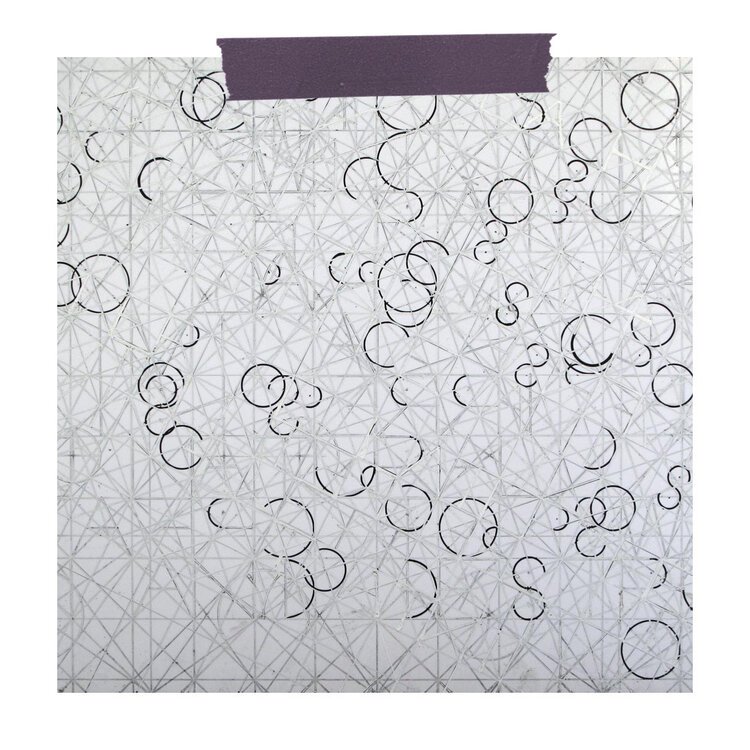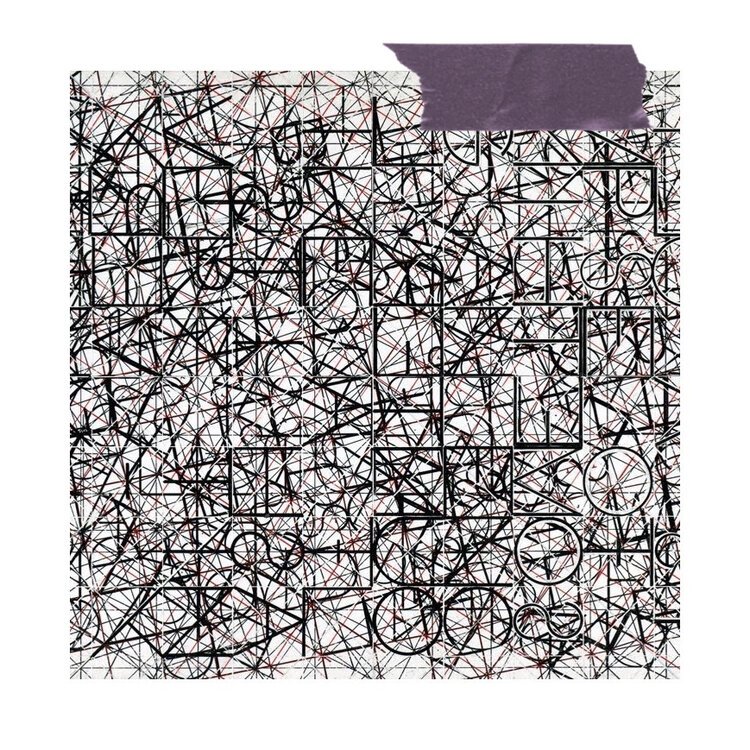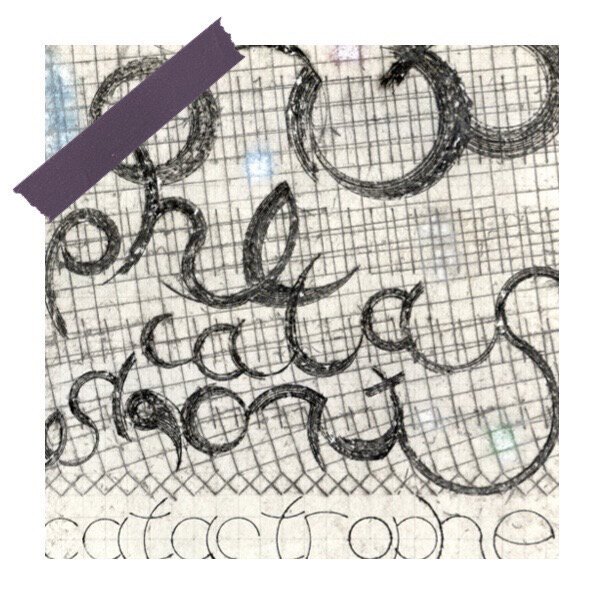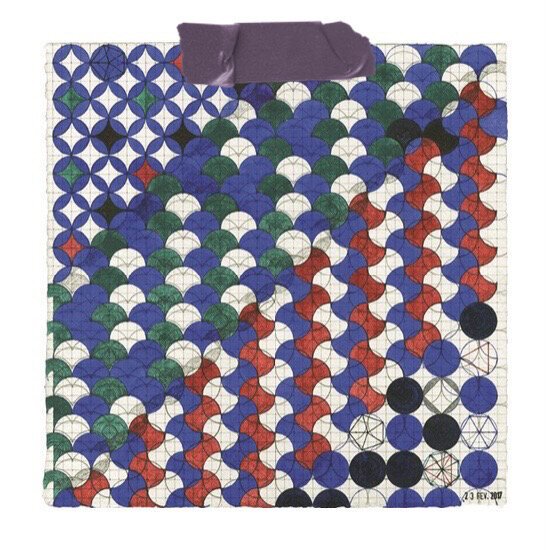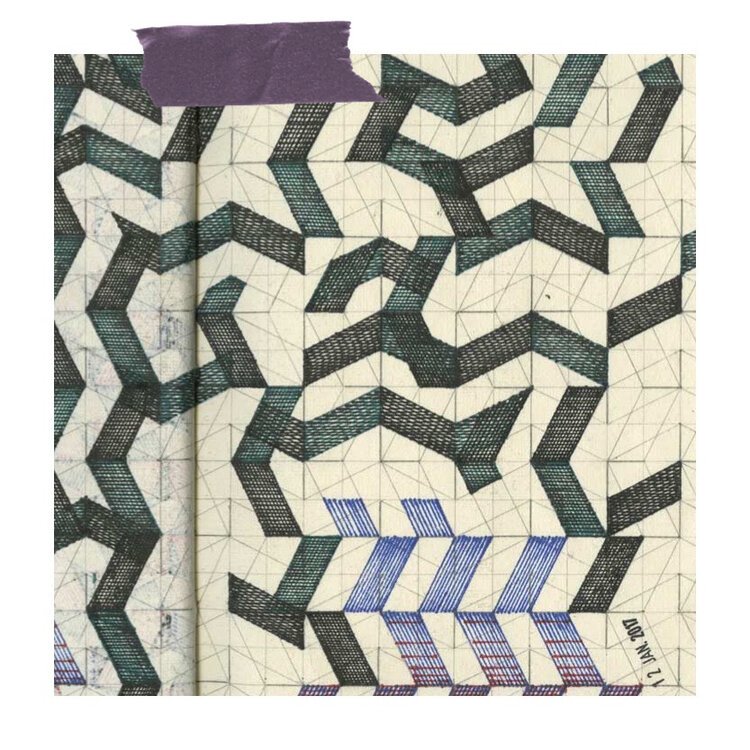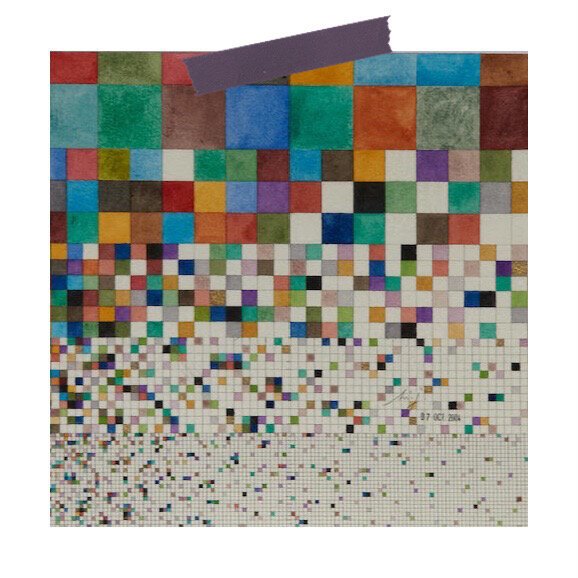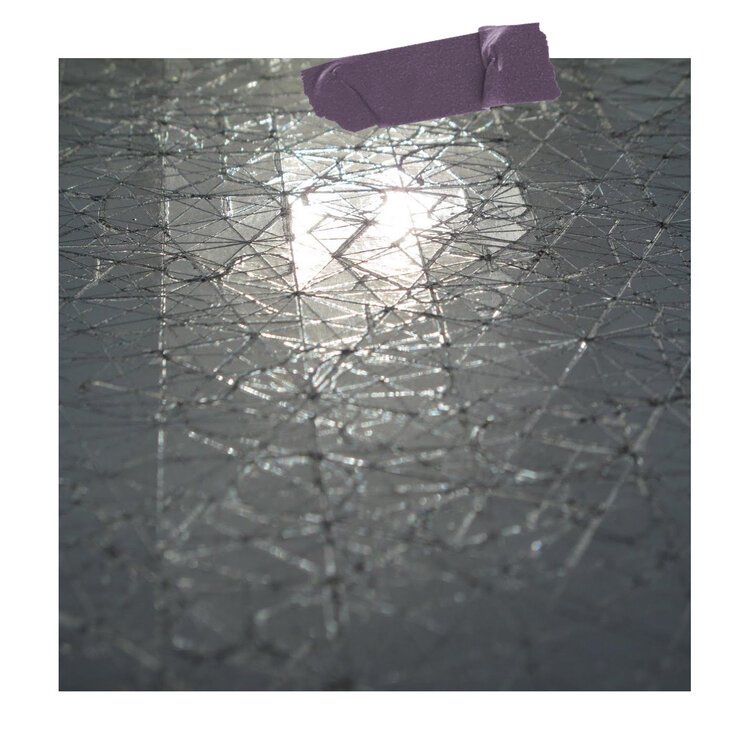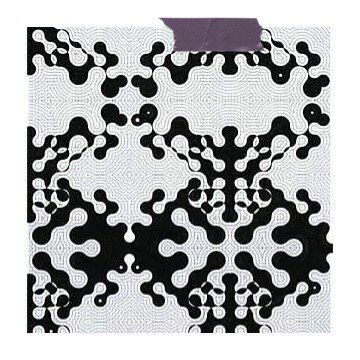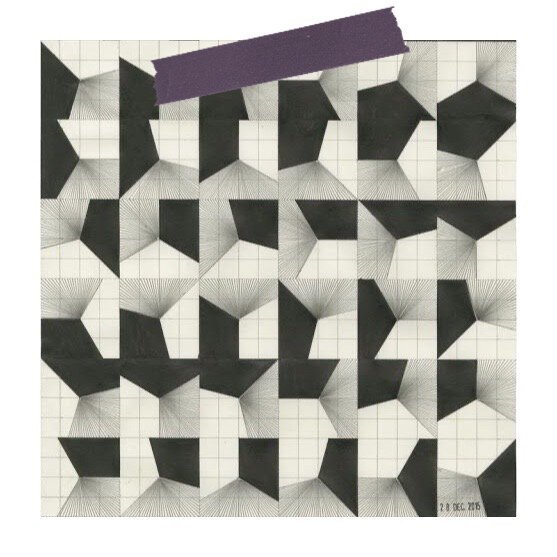Monday Muse: Henri Jacobs
Pandemic as palimpsest.
Palimpsest (n.) - a manuscript or piece of writing material on which the original writing has been effaced to make room for later writing but of which traces remain.
This week I’ve been devouring the book Artist as Researcher and I read about the work of Henri Jacobs. Jacobs is an artist and researcher and uses drawing to describe his research into the idea of a surface in the project Surface Research. I was particularly drawn to his idea of the world being a palimpsest in that the surface of our earth and world are continually scraped away and reused as the residue of past civilizations remains. With different markings, writings, manifestations on the surface, we can begin to make new connections. In one of Jacob’s installations, he paints a text by Ludwig Wittgenstein on a satellite photo of the city of Oss. “Image the world as a white surface with black dots here and there… One can put a net with square meshes over the surface. The net makes it possible to describe the dots. It’s a grid within the dots are related to one another. Only in the net the relations exist, not in the white surface. You can put different nets over the surface, with a coarse-mesh, a fine-mesh, triangular-mesh, or circular mesh-work. They arrange the world so we can describe it. But they reveal nothing.” On top of this set of writing, he paints another text by Lieven De Cauter, “The continuing demographic explosion, technological acceleration, global warming, the hole in the ozone layer, the melting of the ice caps, rising ocean levels, the exploitation of the nonrenewable resources, deforestation, the accelerated loss of biodiversity, humanitarian disasters such as the shortage of drinking water in many places (…), growing inequality, the dualization of society under the pressure of neo-liberal globalization, the growth of the Fourth World, the spread of AIDS, the uncontrollable growth of megacities in the poorest regions of the world, the emergence of the criminal economy and the rise of organized crime, the impotence of the state, the disintegration of the welfare state, migrations, fundamentalism, and xenophobia, terrorism, protracted wars - all these phenomena, and their feedback loops, are difficult to understand as anything other than as a catastrophic scenario.”
Jacobs continues to research the topic of palimpsests to draw a comparison to the ways humans have rewritten, over and over again, the landscapes of earth. He does this through drawing mostly, creating a vast number of daily journal drawings that have been written over, again and again, each layer remaining decipherable for those inclined to look closely. The surface of the drawings also explores construction and demolition and how the two interact with one another.
Of drawing. and his artistic research Jacobs says:
“To draw and to erase is drawing. To draw is to create, is construction. To erase is demolition, is destruction. To erase is to scratch away, wipe out, is different ways of making the constructed drawing less visible and more invisible. Creation and demolition on a two-dimensional surface. I am often lost in contrasts and even more often in opposites… Creation and demolition aren’t real opposites, in fact the one implies the other. The one exists because of its opposite.”
“The difficult part is not to get an idea but to continue with a simple idea into the depths of the unknown, as opposed to getting bored after ten minutes. To continue with a simple idea means you have to explore it by making variations and to fail as much as possible.”
“To Draw is to leave traces on the surface of the paper. No necessity of having an idea. To Draw and To Erase. To erase the yet drawn also leaves traces. To Draw and To Erase. To succeed and to fail. Failure is more important, or better: is more interesting, when you fail there is more to do. You can go on. You don’t know yet. You’re trying to figure it out, searching, thinking, wondering. Drawing and failing is like thinking.”
“Curiosity for the unknown is an important motivation. To create from ideas is quite evident, but an idea is in fact a prison, a superficial prison. To have an idea is already too articulated, it’s working with something which is already known. If you want to go deeper, lower, more profoundly into the unknown it’s better to be empty, blank, without any idea. Inventions happen in unknown areas or soil. So get rid of ideas, look into the gaping maw of emptiness, where some despair reigns. Then it’s going to become interesting, desperation with concentration is the state of being in which an idea-less invention can happen.”
Finally, I leave you with this quote that I feel we can contemplate for the chaotic times we are living in. “These irresistible natural laws of destruction and creation. To create something new is to kill all earlier darlings which delivered satisfactory results. It is more than forgetting or getting over those earlier results, they really have to be totally town down. Transformation could be the word for this process.”
What are we thinking in terms of transformation? How can we get down to the white surface instead of always behind the grid? How can we destroy completely the earlier darlings that have given a few satisfactory results while leaving the rest of us to suffer? The world is a palimpsest that we must scrape clean. We see each day the earlier darlings turning into nightmares and the world and its people crying out for transformation. I am inspired to spend some time drawing today. Drawing as Henri Jacobs would, in a simple way, in a concentrated way, perhaps even in a transformational way.
What questions are you asking yourself today? All quotes from See it Again, Say it Again: The Artist as Researcher by Janneke Wesseling
